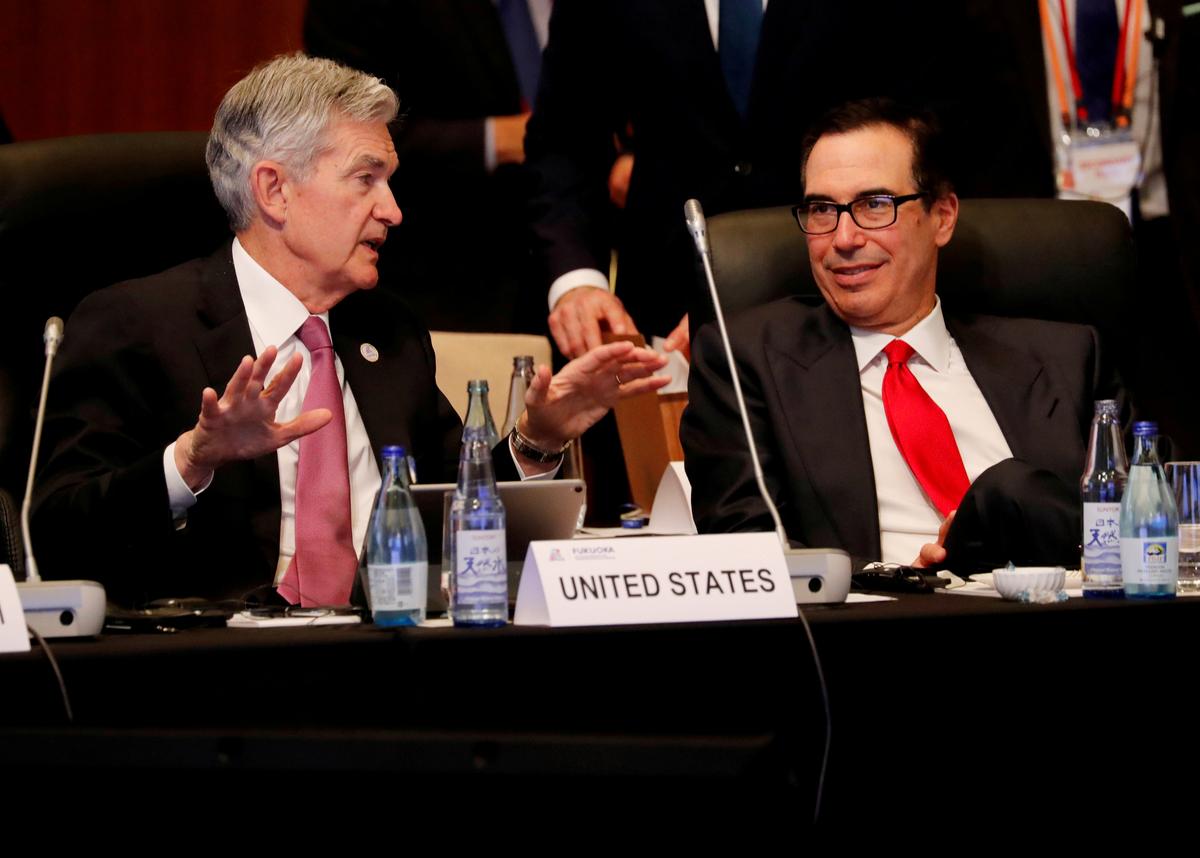WASHINGTON (Reuters) – When the Federal Reserve polled Wall Street about financial stability risks last fall, “global pandemic” didn’t make the list.
FILE PHOTO: Federal Reserve Chairman Jerome Powell talks with U.S. Treasury Secretary Steven Mnuchin during the G20 finance ministers and central bank governors meeting in Fukuoka, Japan June 8, 2019. REUTERS/Kim Kyung-Hoon/Pool/File Photo
But the coronavirus outbreak has triggered virtually every other shock that was mentioned – from a stock market rout to a looming global recession – and is forcing the U.S. central bank and the U.S. Treasury to triage a system springing leaks by the day.
Compared with the 2007-2009 meltdown, which was centered in the mortgage and financial markets, the current crisis is a massively more complex problem with the Fed pulled to intervene in virtually every aspect of U.S. household and corporate commerce and finance.
The challenge now facing the central bank, in consultation with the Treasury, is prioritizing which market, set of companies or group of institutions to help next as it plans how to leverage more than $450 billion of seed money from the Treasury into perhaps $4.5 trillion in credit programs.
It is an uncomfortable role that could push the Fed beyond its traditional job of keeping financial markets open and running smoothly, to picking winners and losers in whatever economy emerges from a pandemic that has brought business activity to a virtual standstill.
“You’ve entered not just the world of accepting credit risk but of allocating it as well,” said Mark Spindel, a Fed historian who is the chief executive officer of Potomac River Capital. Through the emergency $2.3 trillion legislation passed last week, “Congress and Treasury have decided to cast the Fed as the only balance sheet large enough” for the measures that might be needed.
In the extreme, that could include roughly $26 trillion in debt held by non-financial companies an

